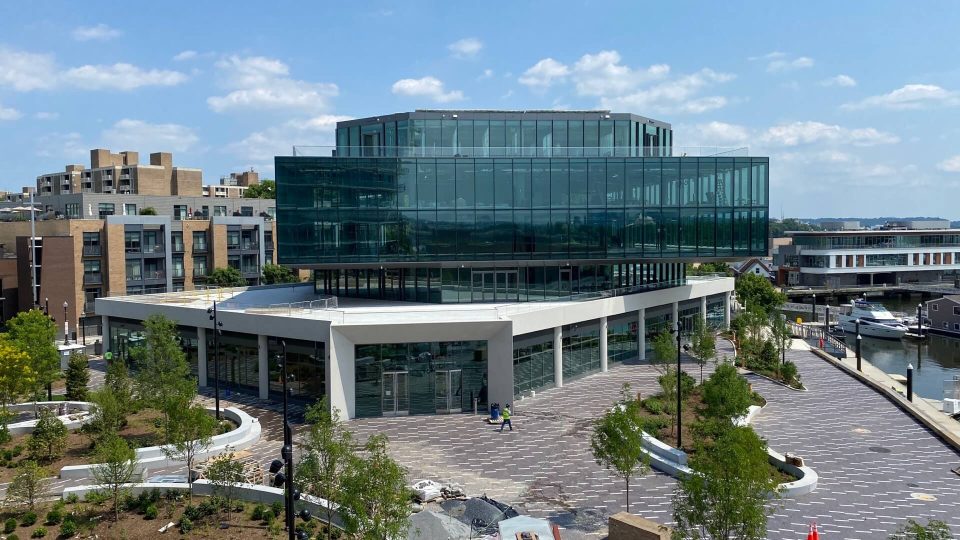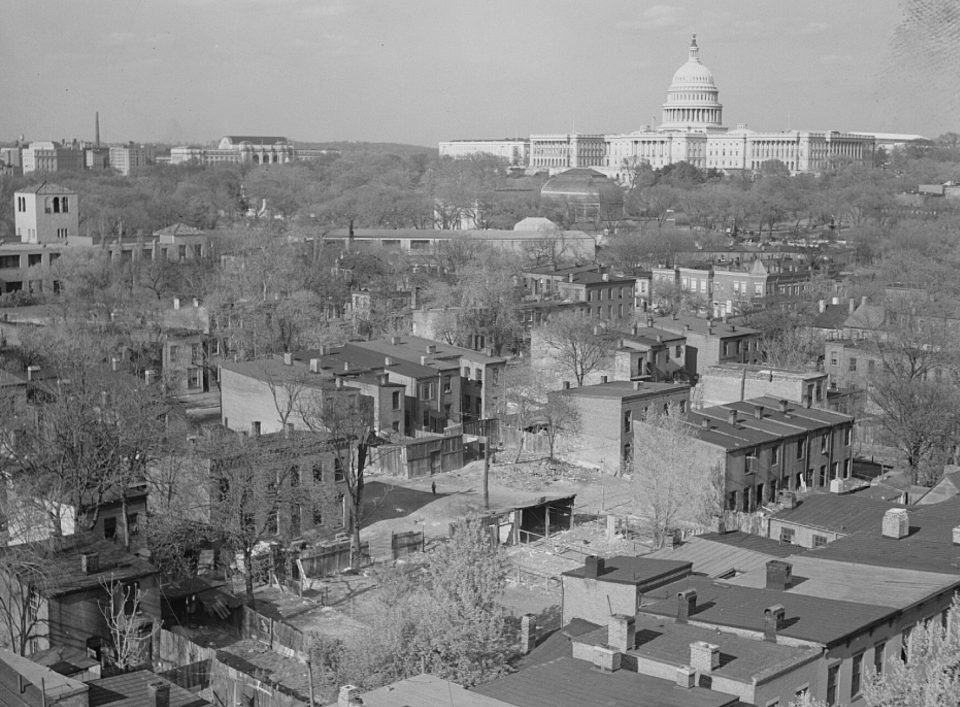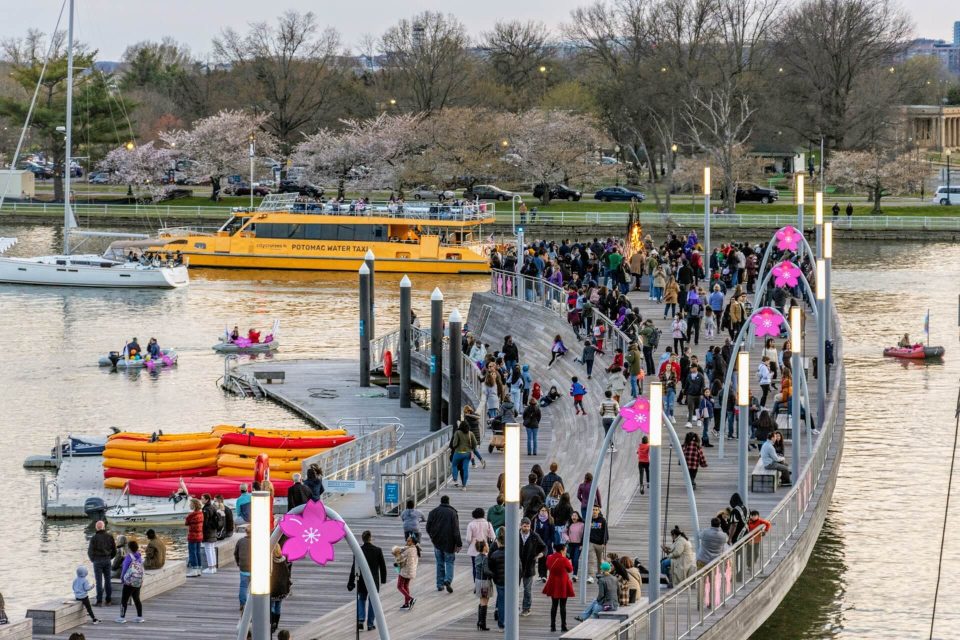
The Complex History
Of Southwest DC
Emerging from master planner Pierre L’Enfant’s District Plan completed in 1791, Southwest DC began as an industrial shipyard, with fishermen selling from their boats until the Municipal Fish Market was established. In the years that followed, Southwest grew into a bustling community with commercial corridors along 4th and 7th Streets. The diverse neighborhood was notable at the time for its large African American, Jewish, and immigrant populations.

Starting in the 1950s, Southwest was targeted for inclusion in the federal government’s urban renewal program.
Under urban renewal, the neighborhood was essentially torn down and rebuilt from the ground up. At a traumatic time in the history of Southwest DC, approximately 23,000 residents and 1,500 businesses were displaced to make way for the redevelopment. With the large-scale urban renewal redevelopments of the 1970s, Southwest is now known for its distinctive mid-century modern architecture. Image Credit: Myers, D. (1939, July). Southwest Washington, D.C. Library of Congress.

In the years that followed, Southwest became known as a quaint residential neighborhood along the waterfront with a significant federal government footprint in Southwest Federal Center. In the 2000s, the national development reached DC and Southwest, resulting in a redesigned Arena Stage, the new Waterfront Station complex, and the groundbreaking of The Wharf, a mile-long complex along the Potomac featuring the iconic Municipal Fish Market, restaurants, bars, shops, and hotels.